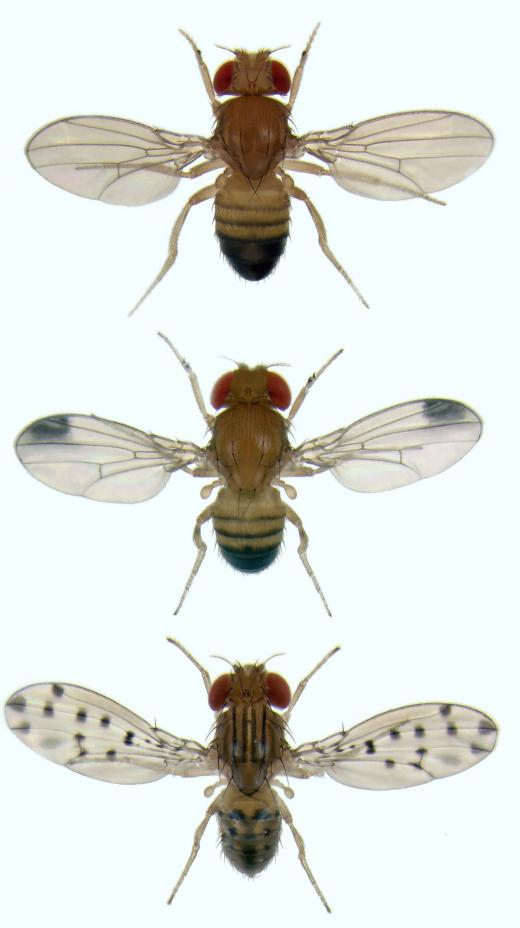What is Chromosome Mutation?
Chromosomes, which contain genetic information in the cells of many different organisms, can become mutated through a variety of different processes, often to the detriment of the mutated organism. A chromosome mutation takes place at the chromosome level, meaning that the whole structural unit of the chromosome is altered in some way. A chromosome mutation is often considered to be different from a gene mutation, in which only a single gene on a chromosome is changed by a mutation. Chromosome mutations occur on a larger scale that affects a significant part of the whole chromosome, so many genes may be affected by a single mutation.
A chromosome mutation is generally classified based on the particular structural change made to the chromosome or chromosomes. One type of mutation, for instance, is a fusion; it occurs when two different chromosomes or chromosome segments fuse together into one. Researchers actually believe that the human second chromosome is a fusion of two chromosomes possessed by pre-human ancestors. Another type of chromosome mutation is referred to as an inversion and occurs when a segment of a chromosome is inverted. Inversions often do not cause any visible mutations to the organism, as all of the genetic information is generally intact and unaltered — though this is not always the case.

When a chromosome mutation alters the number of copies of a particular gene in an organism's genome, it is much more likely to cause some noticeable or significant effect on the organism. Common mutations of this form include insertions, which insert a new segment into a chromosome, and deletions, which remove a segment from the chromosome. Both of these types of chromosome mutations result in a change in the copies of a gene or genes present. Overexpression or underexpression of a gene, either of which can occur from such mutations, can both cause drastic effects on gene expression within an organism. In the white mutation in the fruit fly Drosophila melanogaster, for instance, failure to sufficiently express a gene coding for eye pigmentation results in flies with white eyes.

Researchers have many different ways of identifying a particular chromosome mutation or gene mutation. Organisms with different genetic traits can be crossed in different combinations in order to develop a general "map" suggesting the location of a given mutation. Researchers can also sequence parts of the organism's genome. Sequencing presents researchers with a detailed view of an organism's genetic information and its location on a chromosome.
AS FEATURED ON:
AS FEATURED ON:













Discussion Comments
@rugbygirl - Usually, they are spontaneous mutations, but some people can have a predisposition to having children with chromosomal abnormalities - Downs syndrome is the one I know about.
My cousin and his wife have a child with Down syndrome. When they conceived a second time, they had CVS (chronionic villi sampling) as the earliest way to find out if this child would be healthy. Unfortunately, the test showed that the fetus would have Downs syndrome. Shortly after the test, they lost the baby to miscarriage, as often happens with chromosomal abnormalities. They were seriously considering termination. They love their son and would not trade him for anything, but they feel that they just could not do justice to two children who both had Downs.
They did some testing on the parents and it turns out that my cousin has a translocation. Basically, some of his chromosome 21 material is located on other chromosomes and somehow that makes him more likely to father children with Downs. It's really rare - most people with one Downs child do not have a particularly increased chance of having another. My cousin and his wife are now looking at (and saving up for!) either adoption or IVF with pre-implantation genetic diagnosis to hopefully ensure a healthy baby.
It's interesting to think that some chromosomal mutations could actually become permanent parts of our genome! The thing about chromosome 2 makes sense because chimpanzees, our closest living relatives, have 24 pairs of chromosomes while we have just 23.
Then there's the y chromosome, which is all tiny. Apparently it has lost most of its genes over the eons and now had basically just enough to say "Hey, X chromosome, hold off on making that girl. Let's do a boy this time."
Are chromosomal mutations usually inherited, like genetic disorders, or do they arise spontaneously? It seems like they must be spontaneous as most of them keep people from reproducing, so how could they be passed on?
Post your comments